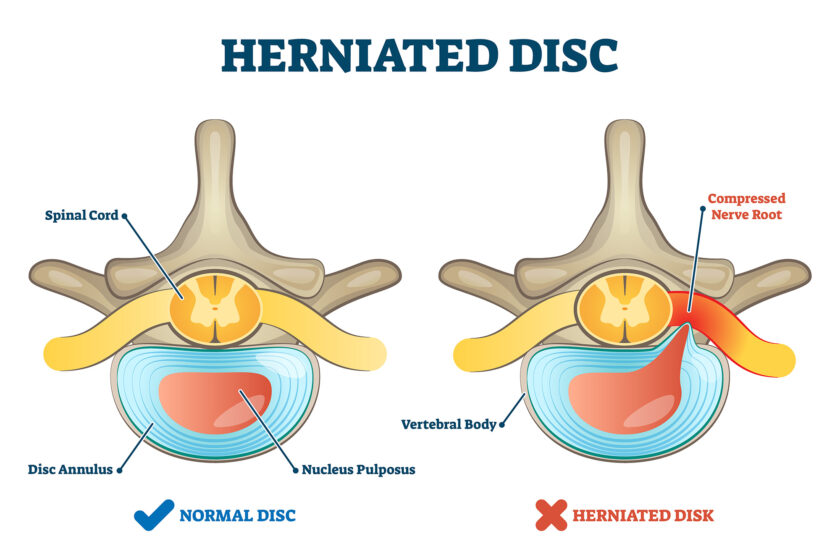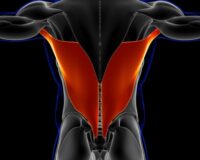
Something’s Disky…
Something sure did go terribly wrong somewhere. We went from being Homo erectus to ‘homo I’m doubled over myself’. Taking into consideration our current lifestyle, work, etc, I guess it’s not all that surprising that we are completing the circle of life and going back to adopting the posture our ancestors had. Except, one of the major differences being that our stresses include balancing work and family life and thankfully not running from being a dinosaurs dinner! Very real stresses nonetheless, and affects us on a far deeper level then we realize.
If you think about it, from the moment you wake up till the time you go to sleep, irrespective of the activity you’re doing, our most comfortable and permanently adapted posture is being hunched over or ‘flexed’. Even though we love being in this posture, our joints and muscles do not fully agree with and are definitely not on board with the idea of being flexed forever and this does come with some serious consequences and payback thanks to our muscles and joints.
One of the most common problems that we as physiotherapists see and hear about is disc issues within the spinal joints. More commonly known as ‘disc bulge’ and in technical terms ‘disc herniation or protrusion’. This is when the gel-like substance that provides shock-absorption and reduces friction between two vertebrae ruptures and oozes out. To help you imagine it, think about squeezing a jelly doughnut! Due to the break in the wall and the disc oozing out, it more often than not gives rise to back pain and associated pain radiating down the leg due to nerve irritation.
But no fear when your physiotherapist is here! A little bit of TLC and a whole lot of corrective exercises will result in your back being as good as new!
What does it look like? What does it feel like?
Firstly, severity depends on the site of herniation and the amount of damage done. Common symptom reported is pain in the lower back that may radiate across or even down the leg. Symptoms in the leg can be limited to just one or both legs and may also radiate down to the feet, more commonly known as sciatica. It feels like an electric shock travelling down the legs aggravated by sustained postures, walking, flexion based activities and heavy lifting. Occasional numbness and tingling maybe present with muscle cramping.
What makes the disc go squish?
- Let’s begin by blaming age and aging shall we? Truth be told, as we age, the disc becomes harder and dries out losing its properties which leads to weakening.
- Postural mal-adaptations especially during lifting heavy objects off the floor.
- Now that ageing has been given blame, let’s bring our genetics into the picture and blame them as well! Am sure our parents wouldn’t mind that!
- Some of the other causes include occupation (all you tradies out there be careful!), recreational activities (in case any of you are into martial arts or sumo wrestling or just some good old WWE!).
Physio to the rescue… Yes we can!
Research shows that conservative treatments like exercise and postural correction are as effective as surgical treatment techniques and are usually the first line of defense to conquer back pain. A full assessment of your back including presenting symptoms, strengths and weaknesses will give a better picture to start the corrective process.
Depending on how your symptoms present your physiotherapist may choose to start you off on passive TLC for your back before moving on to a more comprehensive exercise program.
In recent times, Pilates has shown to work the overall tone and control of the body and provides a comprehensive all round form of exercise. It concentrates on improved posture, better flexibility, control and strength and works the muscles needed for stabilization during movement and at rest. It aims at reducing joint compression and excessive pelvic tilt was using co-contraction between deeper abdominal muscles, pelvic floor and diaphragm.
Depending on your therapist’s assessment and your comfort and choice, you may choose to do these exercises as a mat based program or incorporate equipment commonly used in Pilates like the reformer, trapeze table or multi-chair; all of which you can find at our Adelaide Physiotherapy clinic.
Does one size really fit all?
All of us are made differently, we differ in not only body compositions but also attributes, and by that I mean individual strengths and weaknesses. An individual, customized program will be created for you with the aim of building strength and endurance needed for your specific work requirements, recreational activities, hobbies and other things that make you, YOU!
At Therapia we love individuality and the chance to spread some much needed TLC! Don’t ignore that back pain. Book an appointment with one of our therapists by calling us on 8221 5011 or sending an email to info@therapia.com.au.
We wish you an active, healthy and pain free life!
References
Lop C, Hancock M, Maher CG, Ostelo RWJG, Cabral CMN & Menzes Costa LD 2012, ‘Pilates for low-bck pain (protocol)’, The Cochrane Library, Issue 12, pp.1-21.
Kreiner D, Hwang S, Easa J, Resnick D, Baisden J, et al. 2014, ‘An evidence-based clinical guideline for the diagnosis and treatment of lumbar disc herniation with radiculopathy’, The Spine Journal, Vol 14, pp.180-191.
Book Appointment




